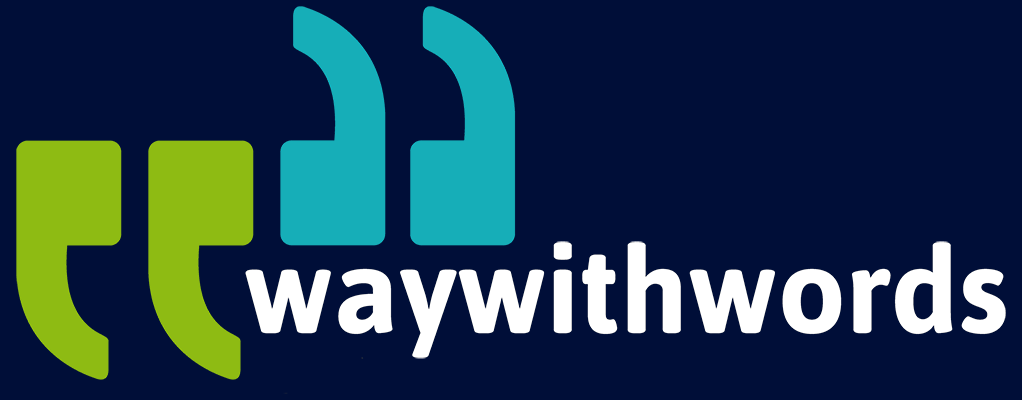How Can Community Engagement Help Collect Localised Speech Data?
Building Richer Voice Datasets Through Collaboration, Trust, and Shared Benefit
The demand for diverse and localised speech data is growing rapidly. With speech technologies now integrated into everything from customer service systems to health apps and language learning tools, the need for datasets that reflect real-world, culturally grounded voices is more important than ever. Yet collecting speech data that is truly representative of local languages, dialects, and contexts remains a significant challenge—particularly in underrepresented or low-resource regions as well as where multiple-language communications occur in speech data (code switching).
One increasingly effective approach is community engagement. By actively involving local participants in the creation, collection, and refinement of voice data, projects can produce more authentic, relevant, and ethically sound datasets. This article explores how engaging communities can enhance the quality and reach of speech data efforts and outlines practical strategies for implementing participatory models.
Benefits of Community-Driven Speech Projects
Community-based approaches to data collection offer a range of powerful advantages, especially when the goal is to gather natural, high-quality, and contextually appropriate voice recordings. Unlike top-down data acquisition strategies, which often struggle with issues of trust, accessibility, or cultural relevance, community-driven models harness the value of local knowledge and relationships.
Here are some of the core benefits:
- Greater Trust and Willingness to Participate
When community members are approached through local leaders, NGOs, or regional networks, they are more likely to participate freely and authentically. This is particularly important in areas where there may be suspicion of external research or privacy concerns. Engaged communities can offer informed consent more confidently, and participants often feel a sense of pride in contributing to a larger goal, especially if the project is linked to local development or preservation efforts. - Improved Data Authenticity and Richness
Locally collected data captures everyday speech more effectively. Accents, idioms, pronunciation variations, and language mixing are far more likely to be recorded accurately when local speakers are both the source and the curators of data. This leads to better training material for voice models, which in turn produces tools that actually work for the people they are intended to serve. - Better Audio Environments and Speaker Variability
Community-led efforts can naturally incorporate a broader spectrum of real-life environments—indoors, outdoors, public, private—as well as a diverse range of speaker ages, genders, and registers. Rather than hiring a few actors in a studio, working with communities yields datasets that mirror the complex conditions under which speech technologies operate. - Alignment With Cultural and Linguistic Realities
Standardised prompts may miss the nuances of local expression. When communities co-create materials or offer suggestions on language use, the datasets produced become more reflective of the real communicative landscape. This is particularly vital for languages with rich oral traditions or those not often represented in mainstream content.
Best Practices for Engaging Local Communities
Effective community engagement requires more than simply sourcing voices from a geographic region. It involves building meaningful partnerships, listening actively, and being prepared to adapt workflows to reflect local realities. The process is not transactional but rather relational. This is an important consideration taken by companies such as Way With Words, where meaningful participation forms a key part of their speech data collections strategy.
Here are several best practices to guide participatory speech data projects:
- Co-Design the Project from the Start
Rather than entering a community with a fixed project plan, co-designing initiatives with local stakeholders fosters transparency and ensures relevance. Ask community members what outcomes they value. Are they interested in education, language preservation, economic benefit, or something else? Their answers should help shape the format, goals, and structure of the project. - Respect Cultural Norms and Communication Styles
Different communities have different expectations about speech, recording, consent, and participation. Some may be wary of having their voices recorded; others may require the involvement of local leaders or family elders before taking part. Tailoring your approach based on these realities is essential for ethical and sustainable engagement. - Offer Clear, Localised Information
Provide all documentation—consent forms, project descriptions, FAQs—in the local language or dialect. Be prepared to use voice recordings or videos instead of text where literacy is low. A clear explanation of how the data will be used, who will have access to it, and what protections are in place helps reassure participants and prevents misunderstandings. - Implement Feedback Loops
Community members should have opportunities to share feedback, raise concerns, or offer improvements throughout the project. This might take the form of regular check-ins, post-session interviews, or open feedback channels. Ensuring that feedback is acknowledged and acted upon builds credibility and rapport. - Collaborate with Trusted Intermediaries
Working alongside schools, local language organisations, libraries, community radio stations, or religious institutions can increase reach and trust. These groups often have a deep understanding of the community’s dynamics and can support recruitment, training, and communication efforts.
Training Local Contributors
Training community members to take on technical roles in speech data projects is one of the most sustainable strategies for localised dataset building. Not only does this empower participants, but it also helps ensure that data is gathered, reviewed, and annotated in a way that honours local language and cultural norms.
- Speech Data Collection
Local speakers can be trained to use mobile apps or basic recording equipment to gather data in home or public settings. Instruction should cover proper mic placement, environmental noise reduction, and how to work with script prompts or free speech tasks. - Annotation and Transcription
Training contributors to transcribe audio into text—especially in local languages—helps build a vital skill while maintaining data integrity. It’s particularly valuable for languages with limited formal orthographies or dialectical variance. Annotators can be taught tagging systems for emotions, speaker intent, or code-switching as well. - Quality Assurance and Peer Review
Rather than outsourcing QA to distant teams unfamiliar with local speech nuances, training a small group of contributors to cross-check data internally builds consistency and quality. These reviewers can spot issues with dialect fidelity, background noise, or prompt mismatch far more effectively than non-native QA teams. - Building Career Pathways
Where possible, training programmes should be linked to broader educational or vocational goals. For example, training modules can be certified or paired with digital literacy development. This opens doors for participants to transition into roles in localisation, AI training, or tech support.

Sharing Outcomes and Benefits
For speech data projects to be ethical and lasting, communities must see the value of their participation not just during the project, but long after it ends. This requires clear commitments to benefit-sharing, transparency, and open access where appropriate.
- Community Ownership of Data and Decisions
While data may ultimately be used in commercial tools or open-source AI models, local communities should retain a degree of ownership. This might include access to the final datasets, decision-making power in future uses, or representation in project advisory roles. - Usefulness Beyond the Project Scope
Find ways to return value to the community. Can the recordings be used for language learning apps in local schools? Can they feed into digital dictionaries or voice banking initiatives? Are there opportunities to use the datasets to document endangered dialects or oral history? These options should be explored early. - Transparent Reporting and Acknowledgement
Share project findings, model performance, or publication outcomes with the contributors. Reports should be written in accessible formats and available in local languages. Contributors and communities should also be acknowledged in any papers, talks, or products arising from the dataset. - Incentives That Make Sense Locally
While financial compensation is often important, it may not be the only or best motivator. Access to mobile data, training opportunities, airtime, hardware loans, or even public recognition can sometimes have more resonance. Designing benefits collaboratively helps ensure fairness.
Case Studies in Participatory Dataset Building
Numerous projects across the globe demonstrate the success of participatory approaches to speech data collection. Here are several noteworthy examples:
- The Masakhane Project – Africa
Masakhane is a grassroots NLP initiative driven by African researchers and contributors. While focused primarily on machine translation, many of its language dataset initiatives follow participatory principles, such as co-design, local leadership, and open access. In recent speech efforts, Masakhane contributors have helped shape data collection tasks in languages like Yoruba, Igbo, and isiZulu, ensuring cultural and linguistic relevance throughout. - Common Voice by Mozilla – Global
Mozilla’s Common Voice project invites contributors from around the world to donate voice recordings in their native languages. In regions like Rwanda and Kenya, Mozilla has partnered with local universities and NGOs to facilitate mass participation in Kinyarwanda and Swahili data collection. The project also encourages community governance over language support, including custom sentence set creation. - ALFFA Voice Project – Amazon Basin
Funded by UNESCO and the Brazilian Ministry of Culture, the ALFFA Voice Project works with indigenous communities in the Amazon to document endangered languages through voice. Community members help define recording protocols, gather traditional stories and speech samples, and receive training in audio editing and metadata tagging. The project’s emphasis on oral storytelling ensures both language preservation and dataset utility. - PanLex and Wikimedia – South America and Asia
Through a collaboration between the PanLex project and Wikimedia, local contributors in languages like Aymara and Meitei have been involved in corpus expansion for digital lexicons. Contributors have not only collected speech data but also annotated examples for meaning, tone, and syntactic structures—making the datasets relevant for both computational and educational use. - Project Angika – India
Angika is a lesser-known regional language spoken in parts of Bihar and Jharkhand. A volunteer-led dataset initiative began in 2021 using community WhatsApp groups to coordinate voice recordings. Local teachers, students, and shopkeepers contributed over 20,000 samples within months. Volunteers curated prompts based on everyday speech, reflecting Angika’s distinct rhythm and vocabulary. The initiative later became a model for similar dialect-level efforts in India.
Final Thoughts on Building Voice Datasets through Community Engagement
Community engagement is no longer just a nice-to-have in the collection of localised speech data—it’s a necessity. As the world becomes increasingly reliant on voice-enabled technologies, ensuring these systems reflect the full spectrum of human languages and contexts is both a technical and ethical imperative.
By working with communities rather than simply sourcing from them, speech data projects can achieve greater inclusion, richer datasets, and lasting impact. From co-design and training to benefit-sharing and ownership, participatory models pave the way for truly human-centred language technologies.
Resources and Links
Wikipedia: Community Engagement
Way With Words: Speech Collection – Way With Words excels in real-time speech data processing, leveraging advanced technologies for immediate data analysis and response. Their solutions support critical applications across industries, ensuring real-time decision-making and operational efficiency.
Letting communities lead is more than a methodology—it’s the future of inclusive AI.
